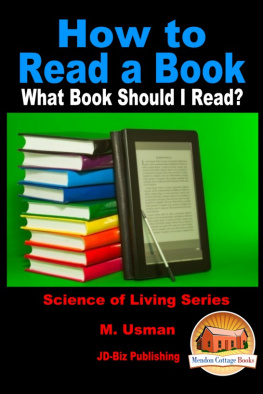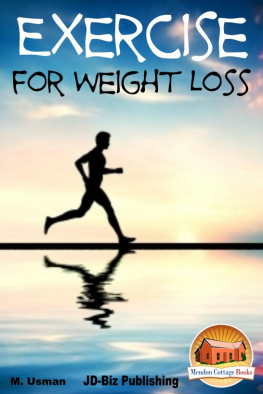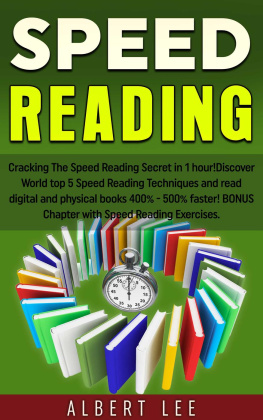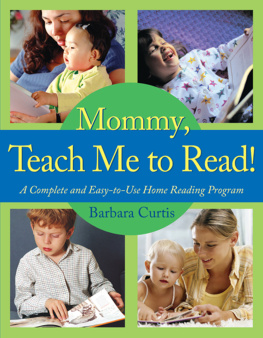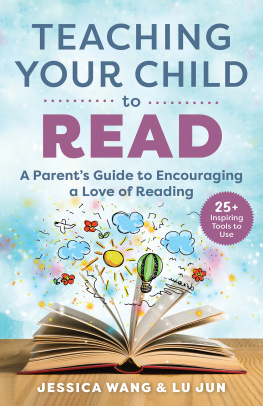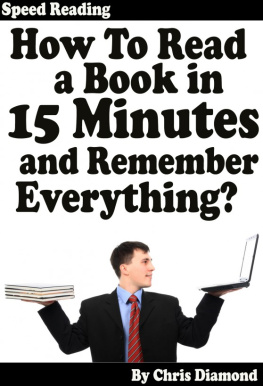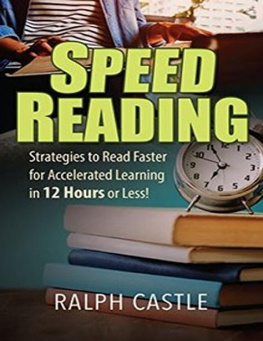How to Read a Book
What Book Should I Read?
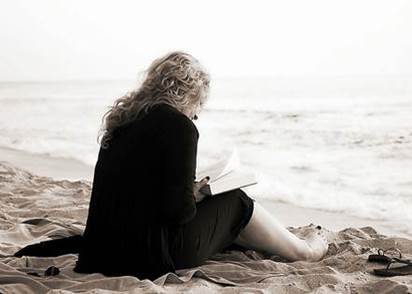
Science of Living Series
By M. Usman
Mendon Cottage Books

JD-Biz Publishing
Download FreeBooks!
http://MendonCottageBooks.com
All Rights Reserved.
No part of this publication may be reproducedin any form or by any means, including scanning, photocopying, orotherwise without prior written permission from JD-Biz CorpCopyright 2015
All Images Licensed by Fotolia, Pixabay, and123RF.
Disclaimer
The information is this book is provided forinformational purposes only. It is not intended to be used andmedical advice or a substitute for proper medical treatment by aqualified health care provider. The information is believed to beaccurate as presented based on research by the author.
The contents have not been evaluated by theU.S. Food and Drug Administration or any other Government or HealthOrganization and the contents in this book are not to be used totreat cure or prevent disease.
The author or publisher is not responsiblefor the use or safety of any diet, procedure or treatment mentionedin this book. The author or publisher is not responsible for errorsor omissions that may exist.
Warning
The Book is for informational purposes onlyand before taking on any diet, treatment or medical procedure, itis recommended to consult with your primary health careprovider.
Table of Contents
Preface

The Author of this particular eBook titledHow to Read a Book, thanks and congratulates you for downloadingit.
In extraction, this book contains detailedinformation about how an individual can learn to read a book orteach someone else how to read a book. It contains fine pointsconcerning several aspects for consideration when one wants to reada book, the main techniques used for reading books, how to readdifferent types or works of writings, and the general sequence thatis related with reading books.
For individuals who love to read, this guidealso goes further to particularize into details, matters concerningthe best book choices, how one can develop the best reading traitsfor the best reading experience and it also emphasizes thedifferent classes of reading.
Keeping in mind that there are otheralternatives that are available to those who wish to read books butdo not have the ability or time, such instances have also beendiscussed in this guide so as to assist you to know how you can usealternative ways for different situations that may apply.
All the sections in this eBook offer so muchessential info that will give you a better understanding as abooklover on the matters of reading books. So, with this guide,it's the Author's aspiration and desire that upon completion, youwill have all the means and skills that you seek as booklover.
PART 1:Fundamental Reading Concepts
The Mutual Concept Behind Reading
Humans generally focus on learning how toread straight from kindergarten and throughout the entire educationsystem and most of the time even after completion of their studies.For children, as they develop in school, since most of you havebeen there I presume, they read for the sole purpose of learning.To put it in simple terms, this means that they normally read toextract information from texts.
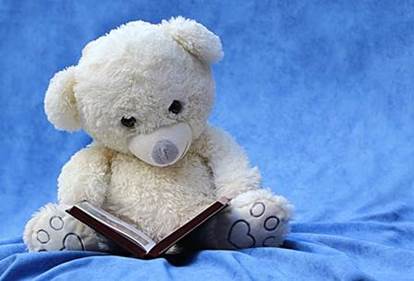
One of the main objectives in the lowergrades is for kids to become more passionate about reading. Theultimate goal is to turn them in to independent readers who areable to use their reading skills to learn new facts and also tostimulate new ideas while they are being taught different subjectsin school. In this section we are going to discuss the vital skillsthat an individual, especially for kids, need in order to becomeindependent, robust readers who love to read books.
1. Fluency
A Fluent reader will be acquainted with wordsautomatically so that he can focus his attention to relate theideas that are written in a book and the background knowledge thathe possesses. Reading objectives include; instant detection andrecognition of words, reading orally or vocally with expression,reading without hesitation, and most importantly readingaccurately.
2. Comprehension
In order for an individual to get the mostout of reading, he needs to practice active reading, especially forchildren or people who are trying to learn a new language. It isnot sufficient to just read words on a single page. Whether you arereading for amusement, reading a textbook or just for leisure, youneed to read with a purpose. This is vital for positive progress,especially for kids. Reading objectives for comprehension includeaffirming the main idea of a reading and placing the events beingread in sequence. Another objective is one's ability to summarizethe reading i.e. a story, both orally and in writing.
3. Vocabulary
When learning how to read, one needs to beaware of words that sound alike, for example, words like "'gold'and 'cold',""'naught' and 'not'," as well as suffixes, prefixes,and root words. The Learning objectives for vocabulary usuallyinvolves the use of clues in the text in order to help the learnerfigure out the difference in the meanings of the words and alsothrough the use of synonyms and antonyms. An emphasis is usuallyplaced on using different parts of speech correctly. This includesthe proper use of nouns, verbs, and adjectives.
4. Spelling and Writing
If you take a keen look, in most upperelementary grades, teachers often focus their efforts on teachingthe children to spell correctly. The children are also taught howto write more refined compositions. This is the stage where writingwell structured paragraphs with accurate punctuation is taught withemphasis.
While in the process of learning, one isexpected to use an appropriate dictionary to search for unfamiliarwords and also for vital editing skills. This is very importantwhen you need to revise the compositions that you write in order tomake them become more rational and understandable. Anothermilestone in this category would be to write down a simple researchpaper using any source of your preference.
Chapter1: Types of Books
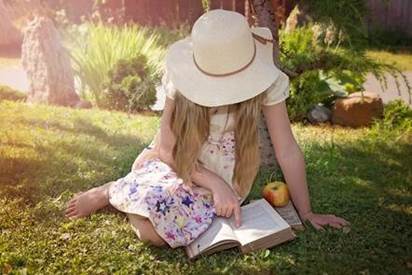
According to Wikipedia different types ofbooks are defined according to certain specifics. These particularsinclude;
Format
Appearance
Method of manufacture
Before we discuss the relevant books thatmost people usually read, let's take a look at the 36 subcategoriesof books by type, they are 36 types in total. These include;
Alphabetical books Anthologies Artists'books
Cancelled books Cigarette card albums Coffeetable books
Comic collection books Comics by formatCookbooks
Dictionaries by type Diaries Emblem books
Fictional books Book formats Graphicnovels
Grimoires History books Incunabula

